17 Korean Dishes Every Foodie Should Try
Explore some of the most unique, mouth-watering Korean dishes that everyone should taste at least once in their lifetime.
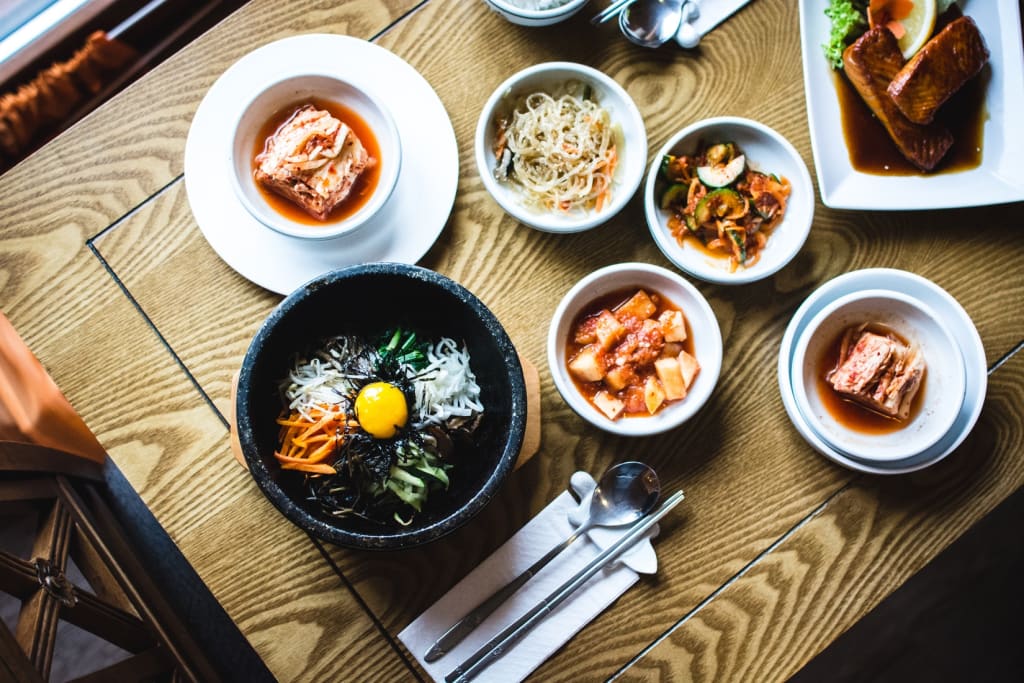
There is no better way to immerse yourself in Korean culture than to indulge in their cuisine. Luckily, it’s not difficult to fall in love with Korean food. Most of us have already been swept away by Korean BBQ, but there’s more to K-food than just that. And if you’re a foodie, I’m sure you’d want to explore more of what Korean food has to offer. Here’s a list of dishes that I loved, which I’m sure most of you will too.
1. Samgeopsal
A lot of us have been introduced to K-food through Korean BBQ, and we loved it! Samgyeopsal (literal meaning is three layers of fat/meat) is basically grilled pork belly that’s very similar to a popular Filipino food, called Liempo. Grilling meat is very common here in Korea, they grill just about every part of pork and beef.
This piece of grilled meat is dipped in sesame oil and salt is wrapped with lettuce or ssam, together with Deonjang (soybean paste). You can add garlic, onions, kimchi, mushrooms, or whatever you see on the table. It’s really up to you however you want it to taste like. Additional tip: there are a lot of varieties of Korean lettuce, each one having different health benefits. My personal favorite is the Korean Perilla leaves (Ggaenip). It has a bit of a strong flavour to it that I find very delicious, as it elevates the taste even more. Plus, it’s known to control cholesterol levels, which may come in handy since we’re stuffing our faces with pork fat.

2. Bulgogi
Bulgogi is one of the more popular classic Korean dishes. It’s thinly-sliced marinated beef, usually cooked together with vegetables and (often) with glass noodles. Its marinate highly depends on the chef but generally, Bulgogi is marinated with soy sauce and sugar. As Koreans are very fond of wrapping their food in leaves, you can do this as well with Bulgogi. Yay for a balanced diet, right?

3. Gamjatang
My all-time favorite comfort food in Korea. If there’s one dish that I always miss when leaving Korea, it’s Gamjatang. It’s basically a spicy pork back-bone stew, cooked with potatoes, glass noodles, perilla leaves (my favorite!) and then garnished with spring onions, peppers, and sesame seeds. But the thing is, good tasting Gamjatang can be found anywhere in the country. To find the best Gamjatang, you need to go visit specific places.
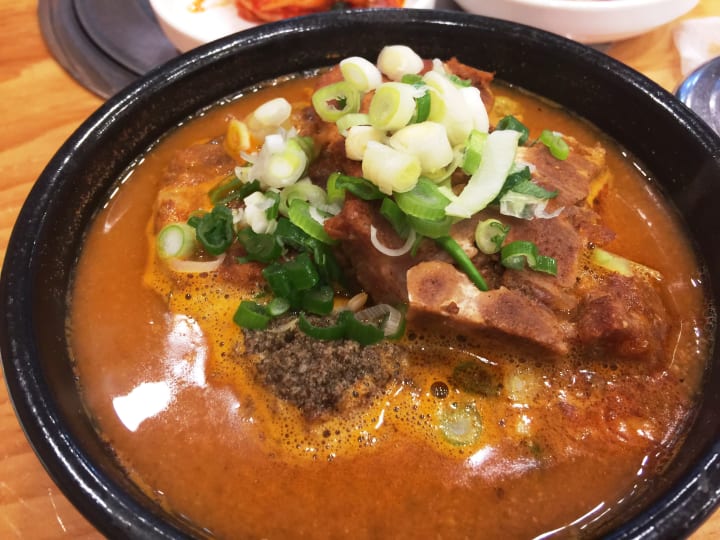
4. Bossam
Bossam is also one of the classics, but not so popular outside of Korea. I feel it deserves a spot in the list because... well it’s pork belly and it’s tasty! It has an interesting taste that’s not too overwhelming but typically Korean. The meat cooked by boiling together with various ingredients (highly depending on with region in Korea) and is eaten after wrapping it with semi-sweet pickled cabbage or lettuce.

5. Kimchi Jjigue
Kimchi Jjigue is a stew made with kimchi and various ingredients, such as spring onions, pepper, tofu, pork, and seafood. This is a very easy dish to prepare, especially if you have leftover kimchi and samgyeopsal. You can just toss it all together and make a nice hot soup. Btw, this is best served with rice, but be careful because it could be a bit spicy.

6. Dalk Galbi
This dish right here confirms that Korea has one of the most delicious chicken dishes. This is so good that even when it’s ridiculously spicy, you’ll find it difficult to stop eating. Dalk Galbi is a spicy stir-fried chicken dish with vegetables. There are many variations of it, but my favourite is when they top it with mozzarella cheese. It’s absolute heaven for cheese lovers!

7. Gimbab
Gimbab is a Korean version of Japan’s maki sushi, where rice is rolled in seaweed (or Gim). A variety of ingredients can be included depending on your choice. The usual stuffings are cheese, egg, ham, cucumber, carrots, and radish. Special gimbabs are sometimes prepared with tonkatsu (fried pork), shrimp, or beef. This is very common Korean comfort food, and is usually brought when you’re on the go or just planning for a quick meal. Interestingly, because it’s that popular these are also available in vending machines.

8. Budae Jjigue
On top of its interesting taste, this dish has an interesting back story. Budae Jjigue, also known as Korean Army Soup, originated during the Korean war in the 1950s. The country was so poor at that time that people resorted to leftover food from the US base, like canned meat (spam, ham, and sausages) and canned beans. Although very foreign to Korean taste, these ingredients together with some other vegetables in their area, kimchi, garlic, and pepper paste were creatively mixed together to make a delicious stew that fits their palate. Now, they have elevated this dish and made different versions of it (seafood, beef, pork, chicken or combination).
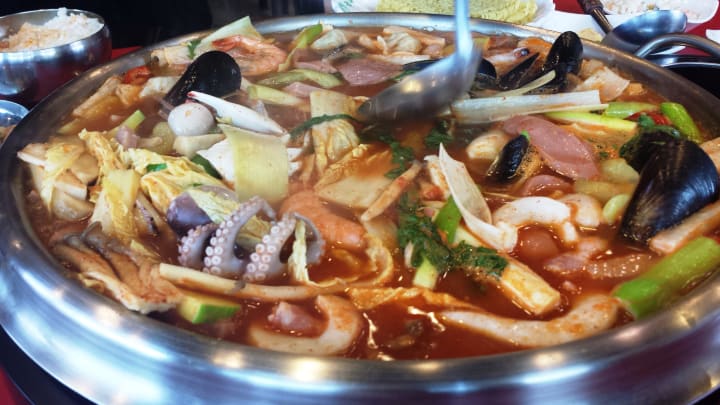
9. Bibimbap
Bibimbap (literally meaning mixed rice) is one of my favourites, as you can see on the number of photos I have of it. Warm rice is topped with vegetables, and Korean paste (usually Gochujang). There are several varieties of Bibimbap, there’s a version that has meat (pork, beef), no meat, with fish eggs, with/without egg, with seafood, with raw octopus, etc. You name it, they probably have a version of it! Every region has its own speciality. I surprisingly liked the Nakji Bibimbap, the one with raw octopus in it. Have a try, it’s worth it!
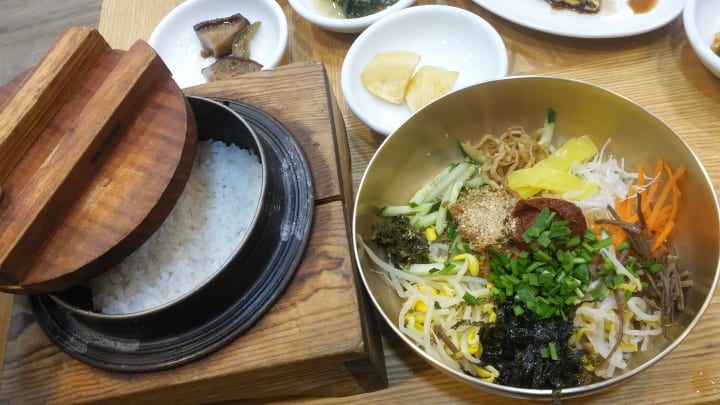
10. Samgyetang
Samgyetang is a traditional Korean dish, which is a soup made of a whole (baby) chicken filled with rice, garlic, some spices, and Korean ginseng. Back in the day, this dish is usually eaten during the start of summer to keep a person healthy and energized for the farming season. This tradition is still usually practiced today, but the dish is available all throughout the year. It’s quite expensive because of the health benefits it is known to provide especially due to the Korean ginseng.
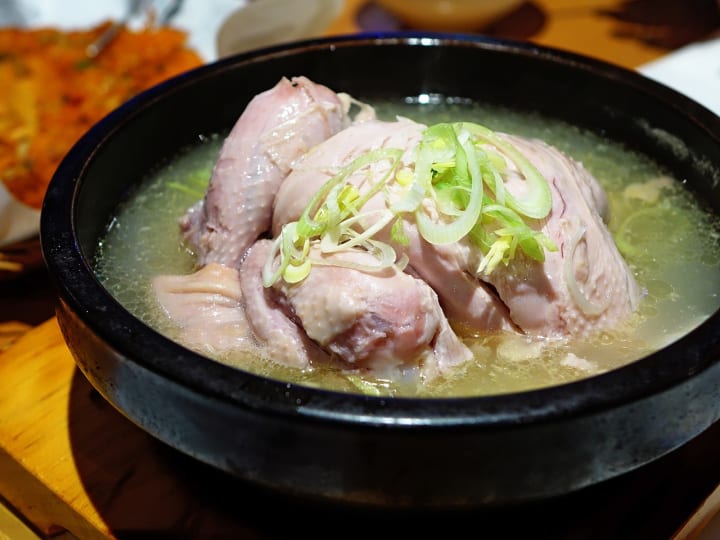
11. Rappokki
Ramyeon + Tteok-bokki = Rappokki. Clever huh? This dish is very popular comfort food, especially with the younger generation. It’s generally composed of noodles and rice cakes, but other ingredients like fish cake (Odeng), boiled egg, mandu, and cheese are also usually added.

12. Deungbyeojjim
Deungbyeojjim is a pork bone dish in soy and oyster sauce with potatoes, tteokbokki, glass noodles, and some vegetables. It’s not a popular dish outside of Korea, but is definitely worth a try. It’s a bit on the salty and sweet side, and not spicy at all. So, this is something to look for if you’re not a fan of spicy food (which btw is very hard to find in Korea).
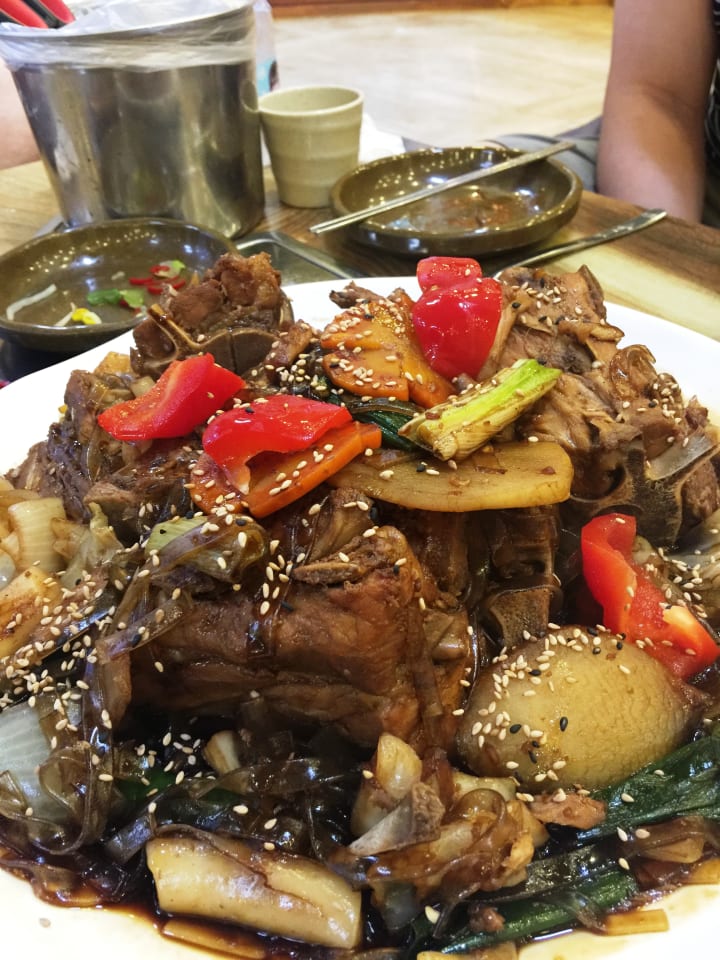
13. Kimchi Fried Rice
Oh, kimchi fried rice! This is probably one of the easiest Korean dishes to make. All you need is rice and kimchi. If you’re not feeling lazy, you can even throw in some other vegetables and then top it with a fried egg and Gim. You can never go wrong with kimchi fried rice. It’s awesome!

14. Haemul Pajeon
Haemul Pajeon (or seafood pancake) is more of a Korean snack than an actual meal. But it’s one of my favourites. I can finish a whole pancake on my own. It is usually partnered with a soy dipping sauce with onions and pepper.

15. Jaeyuk Deobap
Jaeyuk Deobap is spicy stir-fry pork with vegetables and rice. I got addicted to this dish when I first came to Korea, because of its delicious spicy goodness. It fits perfectly with rice! So for rice lovers, this dish will do it for you.

16. Mandu
Mandu is Korea’s version of dumplings. It can be steamed, pan-fried, deep-fried, or even mixed with soup. There are several kinds of mandu, sometimes with pork and/or beef. I prefer the pan-fried vegetable mandu, which contains a mixture of tofu, eggs, glass noodles, and other veggies.

17. Ramyeon
If you click on the photos below, you’ll see they all look different. That is because Korea (similar to Japan) has a huge variety of ramyeon dishes. It is debatable if some of these dishes are authentic Korean dishes, some say they were derived from Chinese or Japanese cuisine. But nevertheless, if you find yourself in Seoul and hungry around after midnight, the restaurants that are usually opened are those that serve these. If you’re not so into spicy food, I recommend Jjajangmyeon. I got addicted to this as well when I first arrived in Korea. But Jjamppong is also a must try, especially if you can handle spicy food.
In any case, you can ask the Ajjumas to lessen the level of spiciness (it could be possible, or not! Lol.) Lastly, another must-try is Nengmyeon (literal meaning cold noodles). I didn’t like its taste at first, probably because we don’t have cold noodles in the Philippines. But after some getting used to, I loved it! I usually order it as a post-meal snack (dessert) whenever the restaurant has it. It’s also topped with a hard-boiled egg which makes it even better.
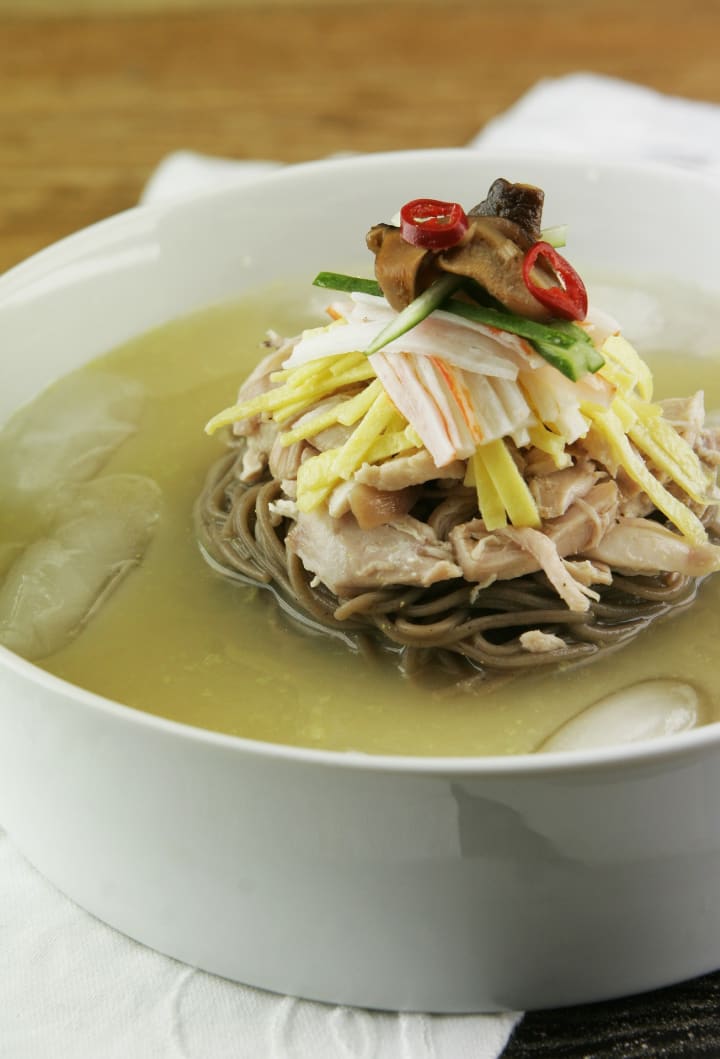
There you have it! My list of must-try Korean dishes. Give it a try, and let me know which ones you liked by leaving a comment down below. Soon, I’ll be writing about Korean exotic food, street food, and of course desserts. Visit me here in Korea and let’s eat. Cheers!
About the Creator
Cil Borlaza
Environmental Scientist | Yoga Enthusiast | Creative Writer


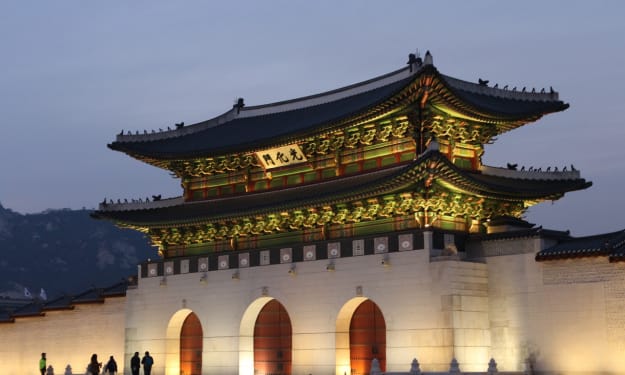
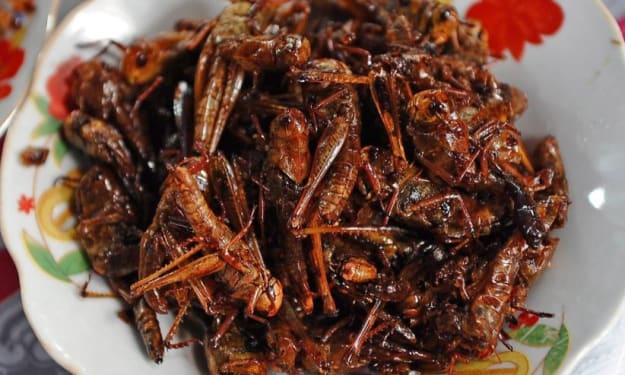
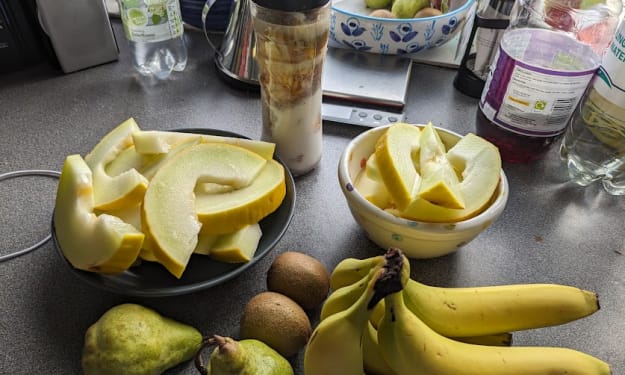

Comments
There are no comments for this story
Be the first to respond and start the conversation.